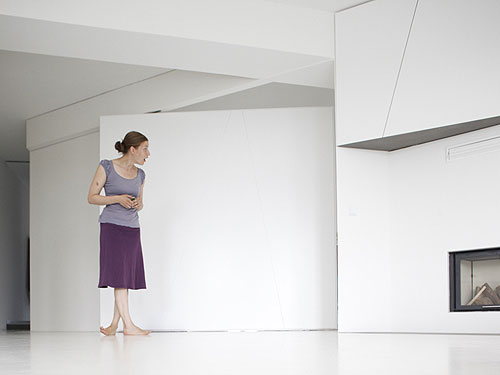

| pro | 2005/05 - 2008/02 extension and restauration of a house from the 50th, in the golden ground |
| material | exposed concrete, oak, coated steel, linoleum, zink |
| client | katja & brian jones |
| engineers | bollinger-grohmann, ffm |

In ‘The Little Prince’, Antoine de Saint-Exupéry describes the process of representation that a six year old proceeds through while attempting to express his thoughts on jungle life (and the continued merging of a boa constrictor devouring an elephant).[1] Two drawings translate his engagement with continued thoughts of an illustration. The first drawing describes the body of the boa. In the discussion with an (adult) audience, the boa is misinterpreted as a hat, the affect intended is lost (the fear caused by witnessing the process of enclosure between the massive body of the elephant and the comparatively weaker force of the snake. A second drawing is done to complete the information (the body inside the body). This is a multiplications of bodies: the body and interior space of the snake (architecture) and the captive body inside that space (the unwilling inhabitant).